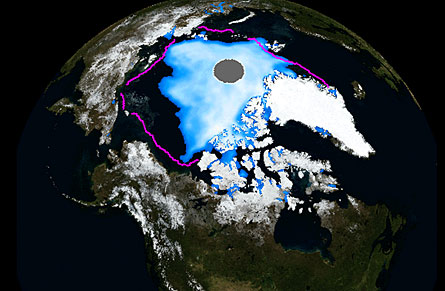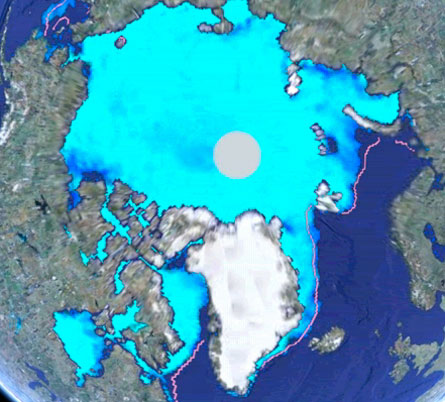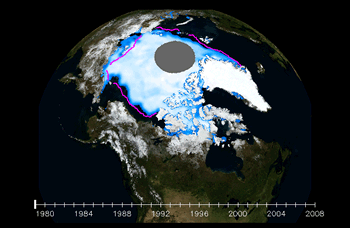This summer, the share of the Arctic Ocean covered by sea ice was the second-lowest since satellite measurements began in 1979. And because much of the ice had formed just this past winter and was therefore relatively thin, the volume of floating ice at the top of the world probably reached a record low, scientists estimate.


The area of the Arctic Ocean for which floating ice covers at least 15 percent of the sea’s surface — a parameter called sea ice extent — fell to about 4.67 million square kilometers this September.
That’s an area just under three times the size of Alaska. That’s also 9 percent higher than last year’s record low value (SN: 10/13/07, p. 238), but 34 percent below the average measured for September since 1979, says Walt Meier, a remote sensing analyst at the National Snow and IceDataCenter in Boulder, Colo.
Since 1979, sea ice extent has declined, on average, about 11.7 percent each decade, Meier and his colleagues report in an Oct. 2 press release. View an animated diagram depicting the change in sea ice levels since 1979.
In March 2008, after a wintertime recovery from last year’s record low ice coverage, thin first-year ice covered a record-high 73 percent of the Arctic Ocean. First-year ice is more prone to break up and melt than thicker, multiyear ice, so the stage was set for massive ice loss this summer, the researchers note.
That ice loss, in turn, primes the ocean to warm even further: Open water absorbs about 90 percent of the sunlight that falls on it, as compared with snow-covered ice, which reflects between 70 and 90 percent of the sunlight that falls on it (SN: 11/12/05, p. 312). Then, when ice breaks up, it’s bathed in warm water on several sides, not just on the bottom — a scenario that accelerates melting even further, says Meier.
First-year ice typically measures between 1 and 1.5 meters thick, whereas multiyear ice averages about 3 meters thick. That disparity, plus the near-record low sea ice extent this year, suggests that the total volume of ice floating atop the Arctic Ocean this summer dropped to a new record low.

This image depicts the average extent of Arctic sea ice this September. At 4.67 million square kilometers, the area was nearly a record low. The pink outline indicates the long-term average since 1979 for September coverage.
Credit: NSIDC, NASA/GSFC
Ch-Ch-Changes from Science News on Vimeo .






